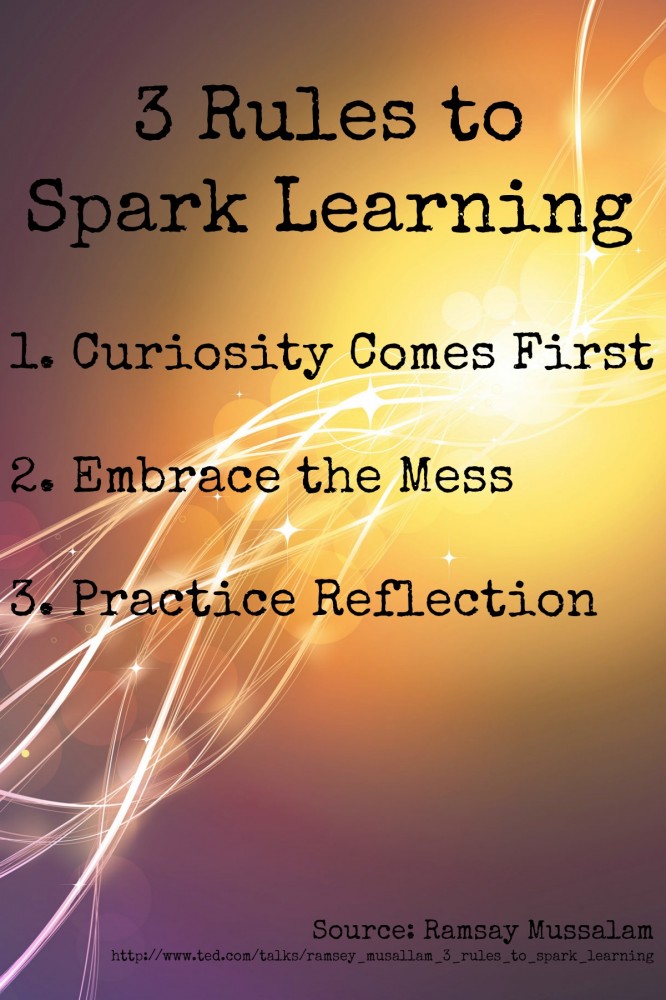
Ramsey Musallam is a high school chemistry teacher that ignites curiosity in his kids through multimedia and technology. Because technological innovation in education can really be a painful and slow process, Ramsey Musallam strives to prove that through meaningful use of tools such as YouTube, Google Docs, and word clouds, everyone can increase their learning capabilities anywhere, and everywhere.
Ramsey Musallam was first diagnosed with a life-threatening aneurysm when he first attained enlightenment. His surgeon impressed him with his confidence and knowledge of the surgery, ultimately resulting in Musallam improving his teaching methods. According to his surgeon, curiosity was the main factor that drove him to start asking the hard questions about the procedures. It wasn’t a love for the subject or because he was motivated as a doctor, but rather because his inadequate knowledge made him curious and hungry for more. That alone wasn’t enough for his surgeon because he knew that it took practice to actually churn out something that had to be perfect. After embracing the messy process of trial and error, the surgeon thoroughly reflected and gathered information from his experiences to design a procedure that was far better than the original.

Of course, Musallam who was a teacher took this away in the form of his own perception, creating three rules to spark learning in his classroom. He found that the questions that students asked in the classroom were always the root of learning because it is because of this curiosity that they are able to learn. Not only that, but their questions should be the opening to a theory that they will form and not the other way around. Think about all those times in the classroom when your teachers threw facts at you and asked you to memorize them, without answering the question you had. That is definitely not the way to start off learning.
Subsequently, students should embrace the mess from learning. That is right, embrace it, not avoid it. So often has the education system focussed on success, that students forget that learning requires them to fail. Every time a teacher asks a question, students are scolded for getting the question wrong. That shouldn’t be the way! Learning requires some serious trial and error, and that should be encouraged, not shunned!
Finally, students have to reflect. Reflection means taking the time to think through past mistakes and learn from them. Through this, students would be able to form new connections, theories and from there absorb new content. With these three steps of learning practiced in daily life, there wouldn’t be a need for so much effort to get students to learn about this world. After all, learning isn’t about memorizing, but rather an understanding of knowledge that were once theories formed by others! So, the next time you decide to teach someone about a new concept, get them curious, let them trial and error with their knowledge and ask them to reflect on their experiences. Learning will be so much more effective this way!